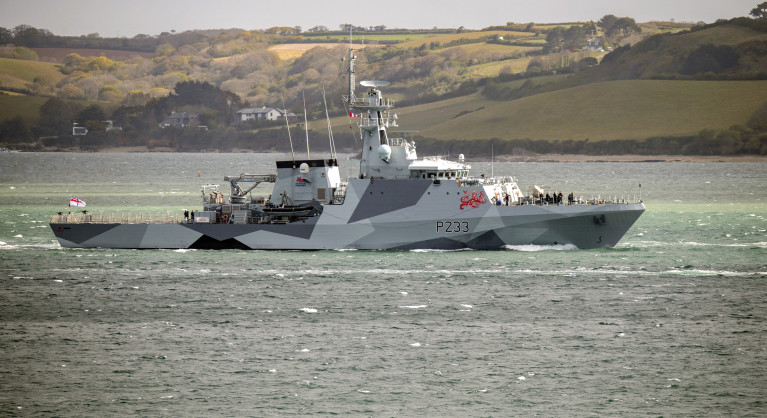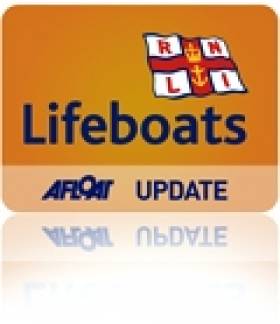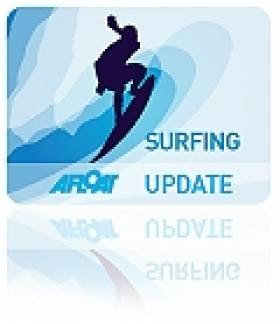Displaying items by tag: Jersey
RNLI Save Two Pilots in Distress Off the Coast of Jersey
Footage from the RNLI shows the volunteer lifeboat crew battling through 2-3metre swells, rain and winds of up to 35mph before reaching the two men who had managed to escape the sinking plane and climb inside a liferaft, fitted with a personal locator beacon.
All three of Jersey RNLI’s lifeboats launched – from St Helier and St Catherine – in a major multi-agency operation on Thursday, 3 November, which also involved Jersey Coastguard, Channel Islands air search and a French rescue helicopter.
One of the pilots onboard, Paul Clifford, said: ‘If the RNLI hadn’t rescued us it would have been a different story. I don’t know of anyone else who’s been in that situation and survived.
‘I was undergoing some advanced refresher training when, at the furthest point from the runway, the engine lost power. We did all we could to get the engine going again, but had to ditch the plane. We knew it was incredibly risky and we were unlikely to survive.
‘We climbed onto the wing and had our lifejackets on, and liferaft prepared. We were stood on the wing for around three minutes before the plane went down.’
Locating the casualties was made simpler by the personal locator beacon they were carrying – a portable, battery-powered radio transmitter used in emergencies to locate people in distress at sea in need of immediate rescue.
James Hope, volunteer lifeboat helm at St Helier RNLI, said: ‘The casualties’ use of a personal locator beacon greatly improved their chances of survival and enabled us to find them in under an hour in the gale-force conditions.
‘It’s very hard to spot such a small craft in such big swells, so to actually find two people eight miles out to sea in a liferaft is an amazing feeling; it’s why we do what we do.
‘If you are heading out to sea this winter, please check your equipment and make sure you are carrying the right safety equipment for your journey.’
Chaos outside Paris’ Stade de France at the Champions League final is leading this morning’s headlines — and among the fans in the city were a group of resourceful Liverpool supporters who travelled part of the way by speedboat.
As the Liverpool ECHO reports, Paddy O’Toole said friends’ original travel plans appeared to have been scuppered by the cancellation of their EasyJet flight to Paris for the crunch football final.
After dashing from Liverpool to London, the group managed to get on a flight from Heathrow to Jersey in the Channel Islands, where Paddy lives, but that still left them hundreds more kilometres short of the French capital.
Boss way to get to Paris @LFC pic.twitter.com/1YKGFRelDx
— Paddy OToole (@morefootie) May 27, 2022
Enter Paddy’s friend Garry Brennan, whose local business has a fleet of motor vessels including the 12-person RIB that carried the intrepid group to the French mainland on Friday (27 May) in plenty of time to join thousands of other Liverpool away fans.
The Liverpool ECHO has more on the story HERE.
UK Royal Navy vessels are patrolling waters around Jersey, amid concerns of a possible blockade of the largest of the Channel Islands, due to an ongoing row with France over post-Brexit fishing rights.
HMS Severn and HMS Tamar have been deployed to "monitor the situation", at the Channel Island, as reports suggest as many as 100 French fishing vessels could protest at the Port of St Helier over the lack of access.
French maritime minister Annick Girardin warned on Tuesday that the country was ready to take "retaliatory measures", accusing Jersey of dragging its feet over issuing new licences to French boats.
British Prime Minister Boris Johnson spoke to Chief Minister of Jersey, Senator John Le Fondre, and Minister of External Affairs Ian Gorst yesterday and "underlined his unwavering support" for the island.
Paris has warned it could cut off power to the island, which receives 95% of its electricity from France through three undersea cables, in retaliation to the fall out.
For further reading, reports RTE News.
Surfers Train as Lifeguards in Jersey
#RNLI - In what seems like a perfect match of skills, BBC News reports on a group of five surfers from Jersey who are being trained as lifeguards by the RNLI.
The surfers have graduated from voluntary beach patrols to learning about hazard awareness, accident prevention, first aid and open water rescue skills, according to RNLI lifeguard supervisor Rob Stuteley.
It's hoped that the scheme will "play a big part in encouraging more local people to sign up to join the RNLI lifeguard team for 2013".
And maybe it will provide some inspiration for surfers and lifesavers around the Irish coast, too!
Young Bundoran Surfer Joins Northcore Stable
#SURFING - Irish surfer Conor Maguire is one of the four new waveriders from the UK and Ireland to become part of the Northcore stable. In the vid below Maguire is mentioned at 2 minutes 11 seconds.
The Bundoran resident joins Sandy Kerr of Tynemouth, England, Craig Burrows of south Wales and Jersey's Charlotte Bayliss on the team heading into 2012.
The young surfer is already making a name for himself on the heavy waves of Ireland's northwest coast like the Peak, and regularly paddling into the meanest of Ireland's slabs such as Rileys.
Maguire is also starting to charge in the big swells, learning the tow-in craft from some of Ireland's most experienced big wave crews, including Northcore ambassador Richie Fitzgerald.
A Northcore spokesperson said of the recent additions: "Between them there's a huge amount of experience, style and skill. All of the riders are representing the very best of surfing talent from their respective home locations and all have achieved respect and recognition on a national scale."


























































